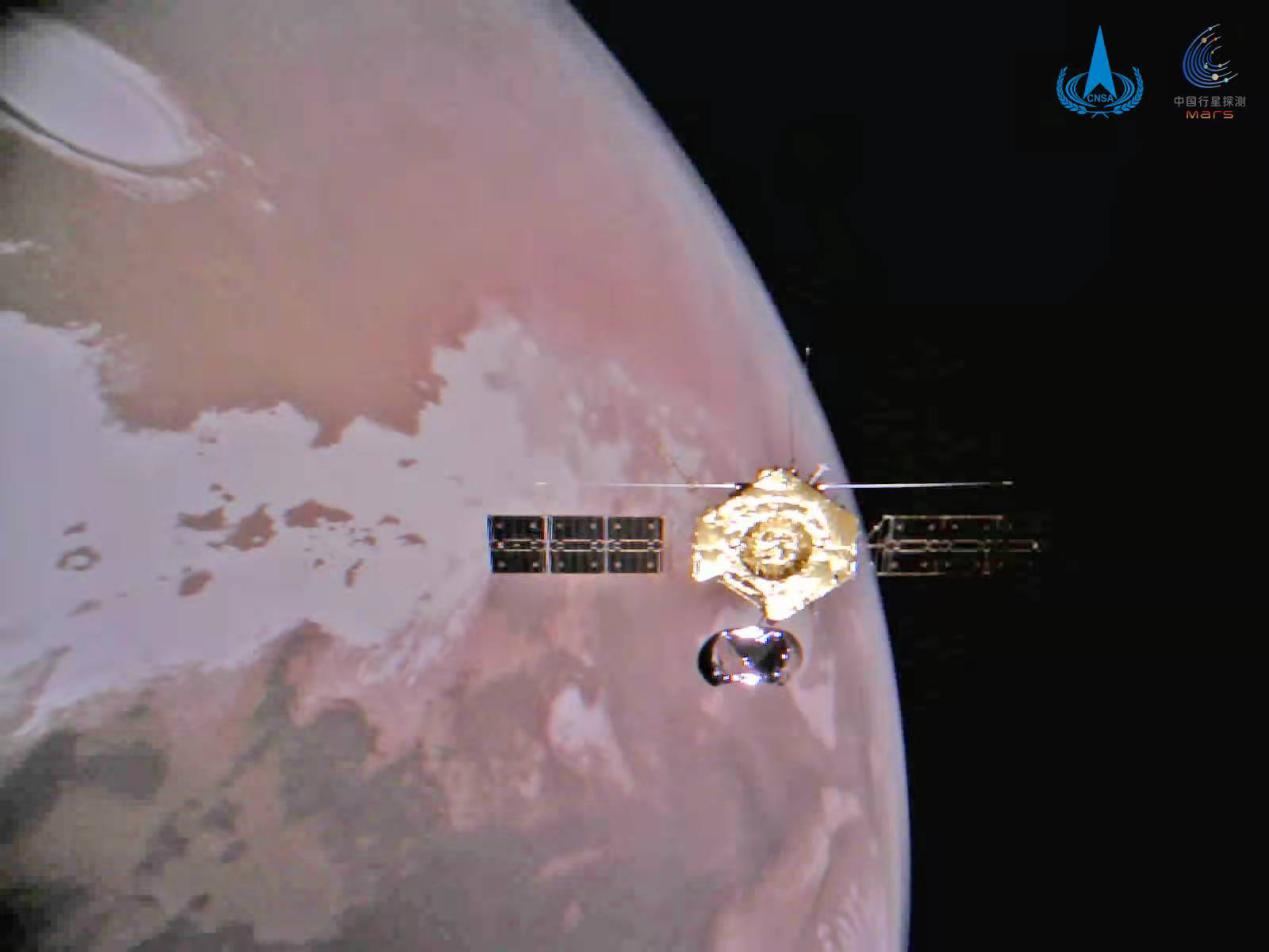Remember how China’s Tianwen-1 spacecraft released a remote camera to take a picture of itself during its flight to Mars, back in late 2020? Now in Mars orbit, Tianwen-1 has done it again, releasing another mini remote camera. Except this time, the planet Mars is part of the view.
The images are stunning.
The China National Space Administration (CNSA) published three pictures, including a shot of the spacecraft in orbit with Mars in the background, a picture of Mars’ northern ice caps, and the first full photo of the orbiter.

While this isn’t the first time one spacecraft has taken a picture of another spacecraft at Mars, this concept of bringing your own selfie camera is pretty darn innovative.

In addition to Tianwen-1 having its own remote cameras, the companion Chinese Mars lander and Zhurong rover placed a wireless remote camera on the ground to take pictures of both the rover and lander.

While our first reaction is that every spacecraft should deploy a buddy with a camera to allow us to see how the spacecraft is doing, this also might be a risky idea. For example, what if we could see actual pictures of the James Webb Space Telescope deploying its giant sunshield instead of engineers just seeing telemetry data? But also imagine a free-flying little camera hovering around JWST – and then inadvertently crashing into it. Might be too chancy.

Tianwen 1 launched in July 2020 from the Wenchang Space Launch Center in Hainan province. It entered Mars’ orbit in February, 2021. A few months later, a landing capsule was released, sending a lander and orbiter to the surface of the planet, landing on May 15. This made China the third country, after the United States and Russia, (when it was the USSR, in 1971 and 1973), to successfully conduct a Mars landing.
CNSA reported that as of January 1, 2022 the 1.85-meter-tall, 240-kilogram Zhurong had worked on Mars and for 224 days – far outliving its three-month life expectancy. The rover had traveled more than 1,400 meters. The Tianwen 1 mission has obtained and transmitted nearly 540 gigabytes of data on the Red Planet. Mission controllers at the China National Space Administration said the orbiter is in good condition and still has ample energy.


